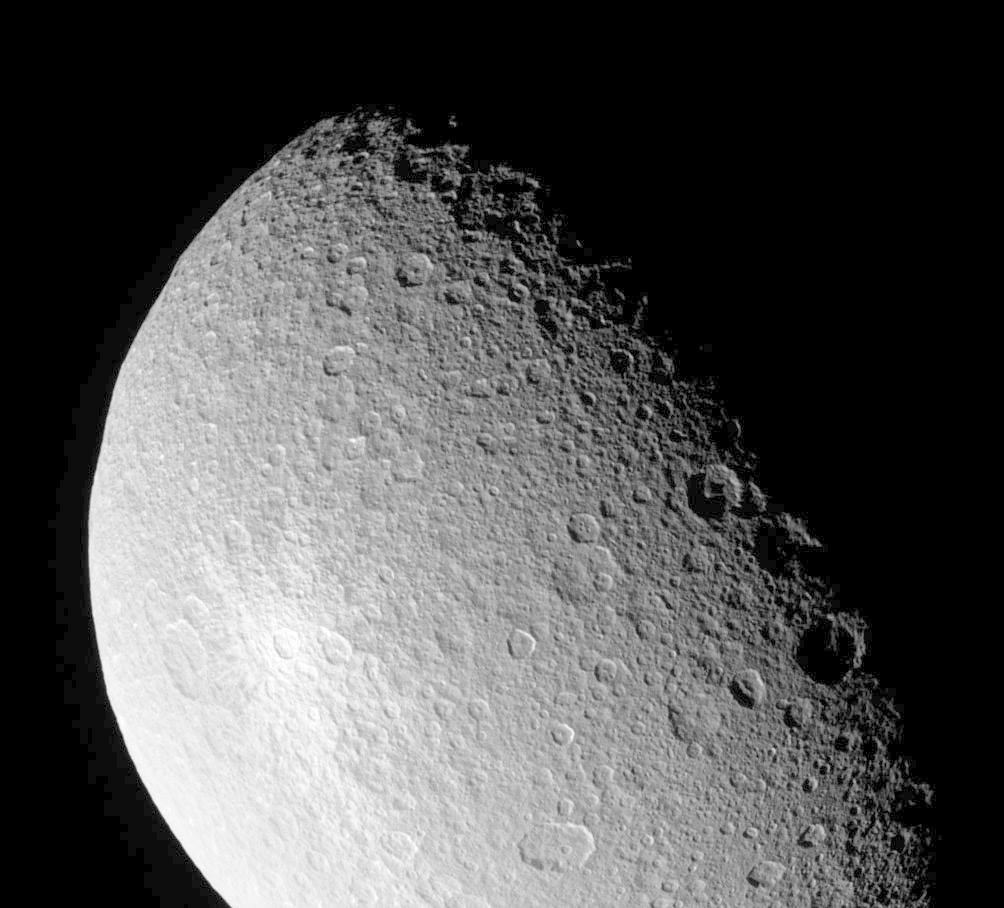Surface of Saturn's moon Rhea
Surface of Saturn's moon Rhea
The surface of Saturn's second-largest moon Rhea consists predominantly of water ice and is marked by countless impact craters. One remarkably bright, probably younger crater is one of the goals for the camera and the spectrometer during the Cassini fly-by on 27 November 2005.

